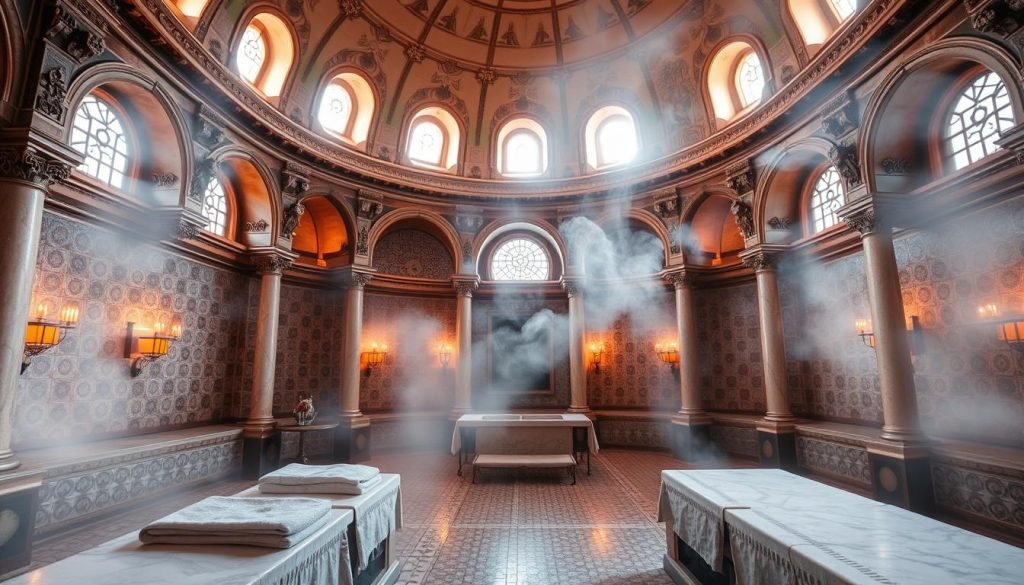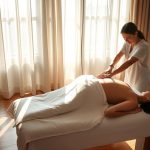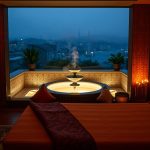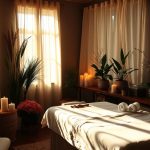Have you ever wondered why Istanbul’s classic bathhouses remain central to the city’s cultural rhythm and modern wellness scene?
You’ll find a rare blend of Ottoman-era architecture, time-tested rituals, and contemporary treatments that shape a singular experience. Historic hubs like Hagia Sophia, the Grand Bazaar, and Tophane sit close to iconic hamams such as Ayasofya Hürrem Sultan and Cağaloğlu, creating easy access to authentic places.
The ritual sequence is simple to follow: heated marble, kese scrubs, foam cleanses, then a cool rest. Today’s offerings layer aromatherapy, facials, and foot treatments onto that tradition, giving you a useful variety of options to match your goals.
Plan smart: reservations smooth entry, basic etiquette keeps you comfortable, and pairing a visit with nearby sights turns a single stop into a standout day on your trip.
Key Takeaways
- You’ll learn how Ottoman history shaped today’s bathhouse culture.
- Top European-side places offer both tradition and modern options.
- Follow a clear sequence from entry to cool-down for best results.
- Book ahead and know basic etiquette to avoid surprises.
- Combine a visit with nearby landmarks to maximize your day.
Why Istanbul’s European Side is your wellness hub right now
The European shore concentrates centuries of bathhouse tradition where history and modern comfort meet.
You’ll find major names like Cağaloğlu (1741), Çemberlitaş (1584), Kılıç Ali Paşa (16th c.), and Ayasofya Hürrem Sultan (1556). These restored domes deliver high-quality rituals that blend Ottoman craft with today’s treatments.
The city’s transport makes it easy to save time. Trams, ferries, and metro links put hamams within short walks of top sights. That means you can slot a calming session between museums or cafés without losing momentum.
“Target spring or autumn for smaller crowds and a more private atmosphere.”
What you can expect:
- A choice of gilded, UNESCO-style houses or cozy neighborhood baths.
- Options for jet-lag recovery, muscle relief, or deep rest that shape the right experience.
- Friendly people who guide you step-by-step, even on your first visit.
For local booking tips and neighborhood picks, see this concise resource: best European-side hamam options.
Massage & Spa Guide for Health and Beauty in Istanbul’s European Side
A clear aim—skin glow, muscle relief, or quiet downtime—makes every step work better for you. Start by noting one main goal. That focus shapes the sequence, cost, and length of your visit.
User intent and what you’ll gain from this guide
You’ll learn how to choose the right services and which add-ons truly add value. The core ritual usually takes 1–1.5 hours; add time if you pick extras.
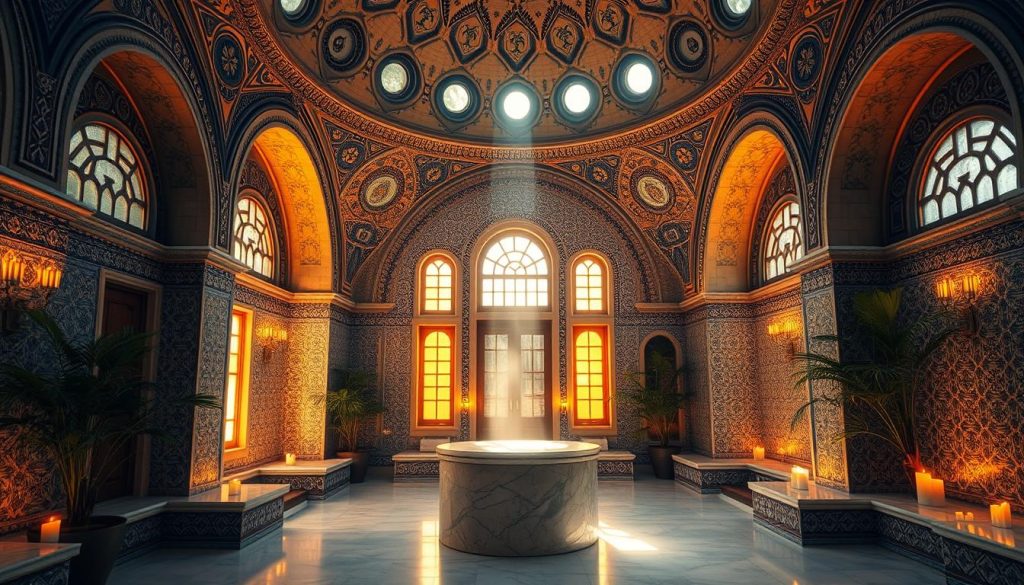
- You’ll clarify the result you want—deep exfoliation, muscle recovery, or calm rest.
- You’ll see which treatments pair best with those goals, from the kese-köpük scrub to oil and facial options.
- You’ll know when a private room is worth the upgrade.
How this how-to approach helps you plan a flawless hamam day
The guide lays out a practical, step-by-step way to plan arrival, the core ritual, and a cool-down. You’ll feel prepared at each part of the process.
- Decide your goal and pick matching services.
- Reserve a time that fits your sightseeing day—avoid peak hours.
- Communicate simple preferences to attendants to shape the best experience.
“A focused plan makes the ritual feel effortless and restorative.”
Inside a traditional Turkish bath: rooms, heat, marble, and flow
A clear spatial flow guides your visit—from cool changing areas to the steaming heart of the ritual.
From soğukluk to ılıklık to sıcaklık: how the spaces work
You begin in the soğukluk, the cool room used for changing and rest. It gives you a calm moment before the warmth.
The ılıklık or warm room helps you acclimate slowly. Mild warmth opens circulation and preps the skin for deeper work.
The sıcaklık is the hot, domed core. Expect humid air above 40°C (104°F). This is where heat softens skin and eases muscles.
The göbek taşı marble platform and individual basins explained
The central göbek taşı is a heated marble platform that radiates steady warmth. You’ll lie or sit here for the main scrub and foam steps.
Surrounding benches and small basins let attendants rinse you with water at controlled temperatures. The platform and benches organize the workflow efficiently.
The dome’s star apertures filter light and help balance temperature, creating a calm, almost ethereal feel.
- You move through three distinct room zones to manage body temperature and comfort.
- Marble holds heat well, so warmth stays even as you move between spaces.
- Finish with a gentle cool-down before you rehydrate and rest.
For deeper background on the tradition and local practices, see a concise overview at this resource.
Your step-by-step hamam ritual on the European Side
Start by easing into warmth; a staged approach makes the ritual more effective and more pleasant. Arrive a bit early so you can hydrate and let circulation adjust. This helps the scrub work on softened skin without causing shock.
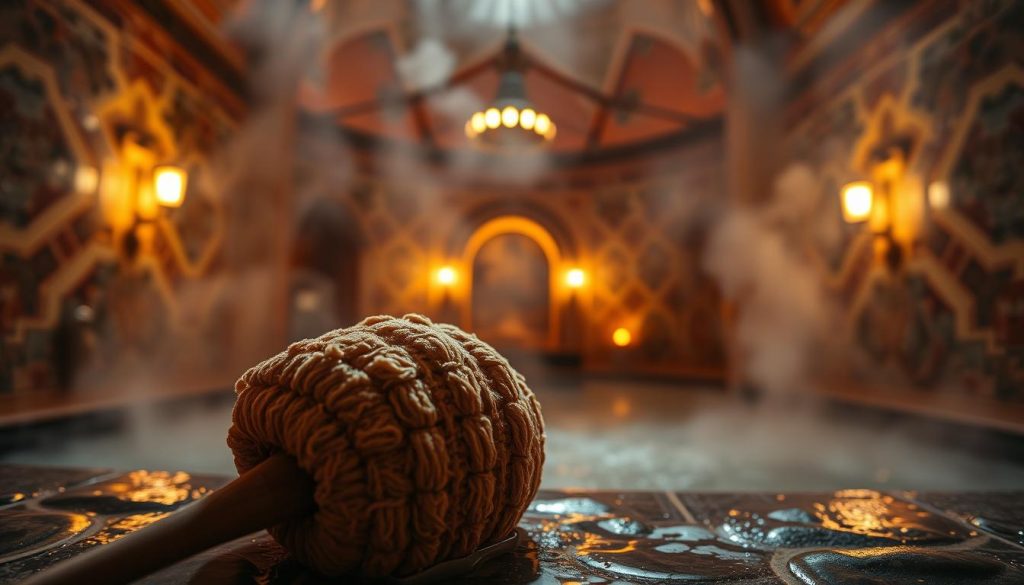
Warm up and hydrate: easing into the heat
Spend time in the warm room to open pores. Drink water before and after to stay hydrated.
Kese scrub and köpük (foam) massage: what the attendant does
An attendant begins with a kese scrub that lifts dead cells and reveals smoother skin. Next comes the köpük foam phase—gentle but thorough strokes that rinse and relax.
Optional add-ons: oil massage, face masks, foot rubs, private rooms
Many larger hamams offer oil work, face masks, or focused foot care in quiet side rooms. Choose add-ons if you want deeper muscle relief or a facial glow.
Cool-down, towels, tea or coffee: ending the experience right
Wrap in towels and rest in the cool lounge. Take your time—drink tea or water and let the calm settle before you step back into the day.
- Plan your minutes: expect 20–40 for the core kese-köpük service plus warm-up and rest, totaling about 1–1.5 hours minimum.
- Communicate with the attendant about pressure, temperature, and modesty to keep the session comfortable and effective.
- Notice results: immediate softness and lighter muscles, leaving you ready for a gentle stroll or a relaxing meal.
Etiquette, modesty, and mixed vs. gender-segregated options
Most historic baths keep sections or times separate for men and women, and attendants typically match your gender to preserve comfort and local custom. A few tourist-oriented venues offer mixed steam areas or private rooms that allow couples to share space; always confirm availability in advance.
Men, women, and couples: what’s typical and where it varies
You’ll usually find gender-segregated hours or wings. If you plan to book as couples, check policies first—some places permit mixed areas while keeping scrubs gender-specific.
What to wear: peştamal, underwear, bikini bottoms
A peştamal is standard and is provided. Guests often choose nothing beneath it, underwear, or bikini bottoms depending on modesty and venue rules. Use your towel to cover during transitions and while moving through public zones.
Privacy norms, cameras, and how to interact with attendants
Phones and cameras belong in the lobby—photography beyond public changing areas is not allowed.
Be direct with attendants about pressure, temperature, and modesty. Clear communication keeps the experience safe and respectful.
- You’ll find same-gender attendants in segregated areas.
- You’ll use a towel strategically to protect privacy.
- You’ll confirm couples options ahead of time.
“Come with an open mind; customs vary between historic public baths and modern facilities.”
What to bring and what’s provided at most baths
Plan what to bring before you walk in—many baths provide basics, but a few personal items make the visit smoother.
The venue will usually supply towels, soap, shampoo, and wooden clogs or plastic slippers. Lockers are common, so secure your valuables and move freely through hot, warm, and cool areas.
Towels, kese, slippers, soap: when to rely on the hamam
You’ll typically rely on the bath for core items such as a towel and slippers. Decide in advance whether to use the provided kese or bring your own if you prefer a firmer scrub.
Bring a dry set of underwear or bikini bottoms if you want them. Use the locker to store rings, a watch, and your phone in a waterproof pouch.
Smart extras to pack for comfort and post-bath plans
Pack a small variety of personal essentials: a hairbrush, deodorant, light face moisturizer, and a compact towel if you like extra coverage while sipping tea or coffee afterward.
- Carry a quick-dry travel towel or wrap for transitions.
- Bring flip-flops if you prefer them over provided footwear.
- Keep a gentle foot balm or face serum to extend the fresh skin glow.
For local tips on timing and nearby services, see this concise resource: local attendant and booking notes.
Timing and cost: minutes, packages, tipping, and reservations
Budgeting minutes and costs ahead makes the ritual more rewarding. Plan so you arrive hydrated and relaxed. That prevents rushing and preserves the cool-down period.
How long to budget from entry to rest time
Allow a minimum of 1–1.5 hours to include warm-up, the core kese-köpük phase, and a calm rest. The core scrub and foam typically run about 20–40 minutes.
Typical prices, add-on treatments, and tipping
Expect local neighborhood options near 600–700 TL for the basic package and 3650+ TL at luxury houses for the same core service. Add-ons like extended massage, face masks, or foot work can double the final bill.
Tip your attendant about 10% and carry small bills to make this easy.
When to book ahead versus walking in
Reserve slots at iconic venues, especially on weekends and in peak season. Walk-ins work well at lower-profile neighborhood places unless you’re in a group. Always compare services and packages so the chosen treatment matches your goal.
“Plan time as carefully as cost; the lounge and hydration phase are part of the value.”
Health and safety: who should skip the heat and when
Certain conditions make the inner hot room unsafe. If you are pregnant, have cardiovascular disease, uncontrolled high or low blood pressure, diabetes, or chronic respiratory problems, you should avoid the hottest areas.
Sustained heat in the sıcaklık often exceeds 40°C and raises cardiovascular load. That can cause dizziness, fainting, or worsened breathing. Tell staff about any diagnosis so attendants can adjust the pace or suggest a private, cooler option.
Food, alcohol, temperature, and simple rules
Avoid a heavy meal or alcohol right before entering. Both increase risk during heat exposure and reduce your body’s chance to regulate safely.
Hydrate with plain water before and after the session, but don’t overfill your stomach immediately before the hot room. Start with shorter visits if you are new to high humidity and heat.
- You’ll avoid the hot bath environment if you’re managing the listed conditions.
- You’ll recognize sustained heat (often 40°C or more) elevates stress on the heart and lungs.
- You’ll eat light, skip alcohol, and sip water strategically.
- You’ll stop and rest in the warm or cool room if you feel light-headed.
- You’ll remove jewelry to prevent heat transfer to the skin.
- You’ll protect freshly scrubbed skin with gentle products and sun protection afterward.
- You’ll let staff know your conditions so they can change the flow and keep you safe.
“If in doubt, choose a shorter session and inform attendants—safety preserves the good effects on skin and body.”
For tailored options and private-room choices that reduce heat exposure, check this concise resource: private session options.
Top historic hamams and spa experiences on the European Side
Step into buildings where architecture, warm marble, and ritual meet. Pick a place that matches the mood you want—grand history, quiet intimacy, or a practical stop near sights.
Ayasofya Hürrem Sultan Hamam (1556) sits beside Hagia Sophia. Expect Mimar Sinan details, refined rituals, and a polished marble platform that frames every step.
Cağaloğlu Hamam
Built 1741 as the last great Ottoman turkish bath, Cağaloğlu blends heritage with eco-minded touches. You’ll find olive-oil soaps, handcrafted mitts, and a celebrated guest list.
Çemberlitaş Hamamı
Dating to 1584, this Mimar Sinan design retains enduring authenticity. Separate rooms for women and men keep tradition, and the location is ideal for the Grand Bazaar.
Kılıç Ali Paşa Hamamı
In Tophane, this 16th‑century masterpiece delivers classic steam rituals under luminous domes. Choose oil work, face treatments, or focused foot care in quiet side rooms.
Vezneciler Turkish Bath
From 1481 in the Fatih area, this rare second-floor bath emphasizes heritage cleansing and simple renewal. Expect strong marble craft and attentive service.
“Book the city icons early—ideal times and packages fill fast.”
| Hamam | Era & Location | Notable features |
|---|---|---|
| Ayasofya Hürrem Sultan | 1556 — near Hagia Sophia | Mimar Sinan luxury, marble platform, refined rituals |
| Cağaloğlu | 1741 — historic district | Last Ottoman turkish bath, eco ingredients, celeb visitors |
| Çemberlitaş | 1584 — by Grand Bazaar | Authentic layout, separate rooms, easy access to sights |
| Kılıç Ali Paşa | 16th c. — Tophane | Classic steam rituals, luminous domes, peaceful rooms |
| Vezneciler | 1481 — Fatih | Second-floor design, heritage programs, marble detail |
What to expect: clay masks, aromatherapy, oil work, face and foot treatments, and post-session tea or sherbet in relaxed lounges. Match a place to your goal—spectacle, privacy, or family-friendly ease.
To compare times and secure top slots, see a practical local listing at best hamam options.
Plan your spa day with the city: when to go and how to get there
Match a hamam slot to transit lines and nearby sights to make the most of a short trip. Plan the part of your day so transit, a calm lounge, and a quick stroll fit together without rush.
Best seasons and times for a relaxed experience
Target spring (Apr–Jun) or autumn (Sep–Nov) to enjoy milder weather, softer light, and fewer crowds. These months give you better availability for premium room upgrades and quieter lounges.
Choose morning or late afternoon to avoid peak visitor time and protect your recovery window before evening plans.
Reaching European-side hamams by tram, metro, and ferry
Ride the tram to reach Old Town baths quickly. Use the metro to get to lively hubs like Taksim or Levent. Ferries connect scenic docks—Beşiktaş and Karaköy—and leave you a short walk from several places.
Carry an Istanbulkart as an easy way across tram, metro, and ferry lines. If you arrive via IST, allow extra transfer time so your arrival doesn’t compress the warm-up and rest parts of the experience.
Pairing your bath with nearby sights and a restorative tea stop
Plan a light day around the session. Book in advance, then add a nearby stop—Ayasofya Hürrem Sultan after Hagia Sophia or Çemberlitaş near the Grand Bazaar make tidy combos.
Save some time for tea or coffee in a rooftop café or a historic tea house to extend the calm. Confirm room or suite add-ons if you want privacy for couples, and check local opening hours and prayer times to keep walking routes smooth.
“Keep flexibility in your schedule; the ritual should reset your pace, not force you to rush back into the city.”
For practical comparisons and bookings, see these best local listings.
Conclusion
Close the visit by planning time, cost, and a calm cooldown with tea.
You now have a clear blueprint to enjoy a turkish bath: book iconic venues early, budget 1–1.5 hours, and know typical costs from neighborhood to luxury tiers.
Prioritize the core steps—warm-up, kese-köpük scrub, foam—and choose add-on treatments like oil, face, or foot work to fit your goal. Reserve the right room style and tell the attendant your comfort level.
If you want quick local booking tips, see this resource: local booking tips.
Enjoy the calm, respect men women norms, and savor the lounge tea before you return to the city—this leaves skin soft and the whole day feeling well spent.
